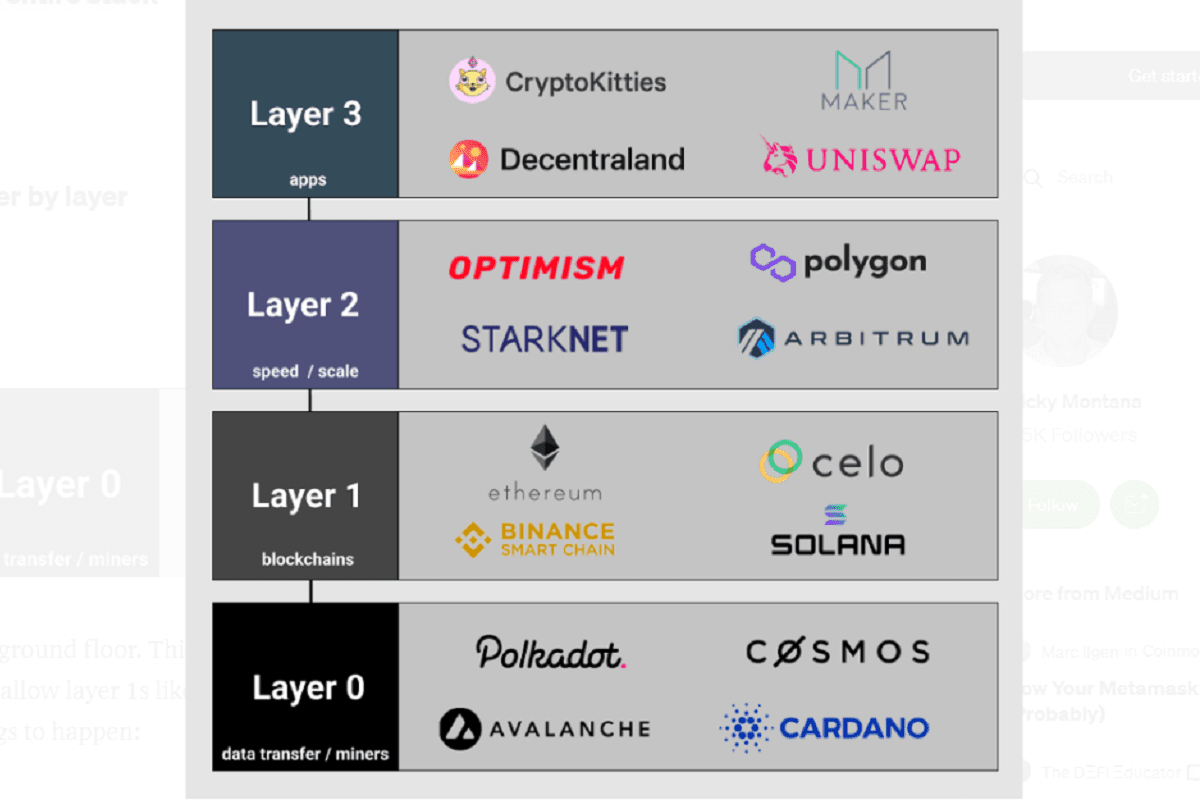What Is Layer 1 in Blockchain?

A Layer 1 is a base-level network, such as Bitcoin, Ethereum, or BSC, that processes transactions on its own blockchain and utilizes its own token for transaction fees.
The blockchain protocol consists of four layers - layer 0, layer 1, layer 2, and layer 3.
Layer 0 is the foundation for building multiple blockchains, allowing seamless interaction between them. L0 development facilitates interoperability and cross-blockchain communication.
Layer 1 blockchain conducts transactions without another network.
Layer 2 are scaling solutions that handle transactions off-chain from the layer 1 blockchain to reduce its transactional load.
Layer 3 is the realm of blockchain-based applications, including games, wallets, and other DApps.

We're going to dive into Layer 1 today
Layer 1 in blockchain is essential as it consists of the main network and its tools. Its primary responsibility is to register and record transactions transmitted through the network and achieve consensus on their accuracy. It also verifies wallet addresses, public and private keys, and token balances. The Layer 1 protocol provides security through various consensus mechanisms such as Proof-of-Work or Proof-of-Stake.
Blockchains such as Bitcoin, Ethereum, Binance Smart Chain, and Solana are considered Layer 1 blockchains. It is common for them to encounter the "blockchain trilemma" - a challenge that hinders each of these properties, so L1 only effectively delivers two of three desirable blockchain properties: decentralization, security, and scalability.
The term "scalability trilemma" was coined by Ethereum founder Vitalik Buterin to describe the three interrelated properties of a blockchain, namely:
- Security;
- Decentralization;
- Scalability.
The trilemma dictates that blockchain technology can only excel in two of the three key areas of security, decentralization, and scalability. This means that current blockchains have to make trade-offs and compromises regarding these fundamental properties. A perfect illustration of this is Bitcoin, which prioritized security and decentralization, but sacrificed scalability as a result.
Blockchain developers have been working on scalability solutions for many years, but there is still ongoing debate about the best alternatives. When it comes to scaling Layer 1, several key parameters are considered. These include:
- Increasing the block size, which allows more transactions to be processed per block.
- Changing the consensus mechanism utilized;
- Implementing sharding, which is a form of database partitioning.
However, implementation of such plans is time-consuming.The rapid growth of cryptocurrency interest worldwide creates heavy network traffic, causing slow transaction processing and high fees. When the blockchain network is congested, active transactions are queued in a memory pool and take longer to process. To address this issue, miners prioritize transactions with higher gas prices, which in turn drives up minimum fees.
Developers have begun exploring various options to solve the blockchain trilemma, including second-layer networks. Those are networks like Optimism, Arbitrum, Starknet, and others. There is a possibility of doubling or tripling computational performance and transaction costs with L2.
Recommended

